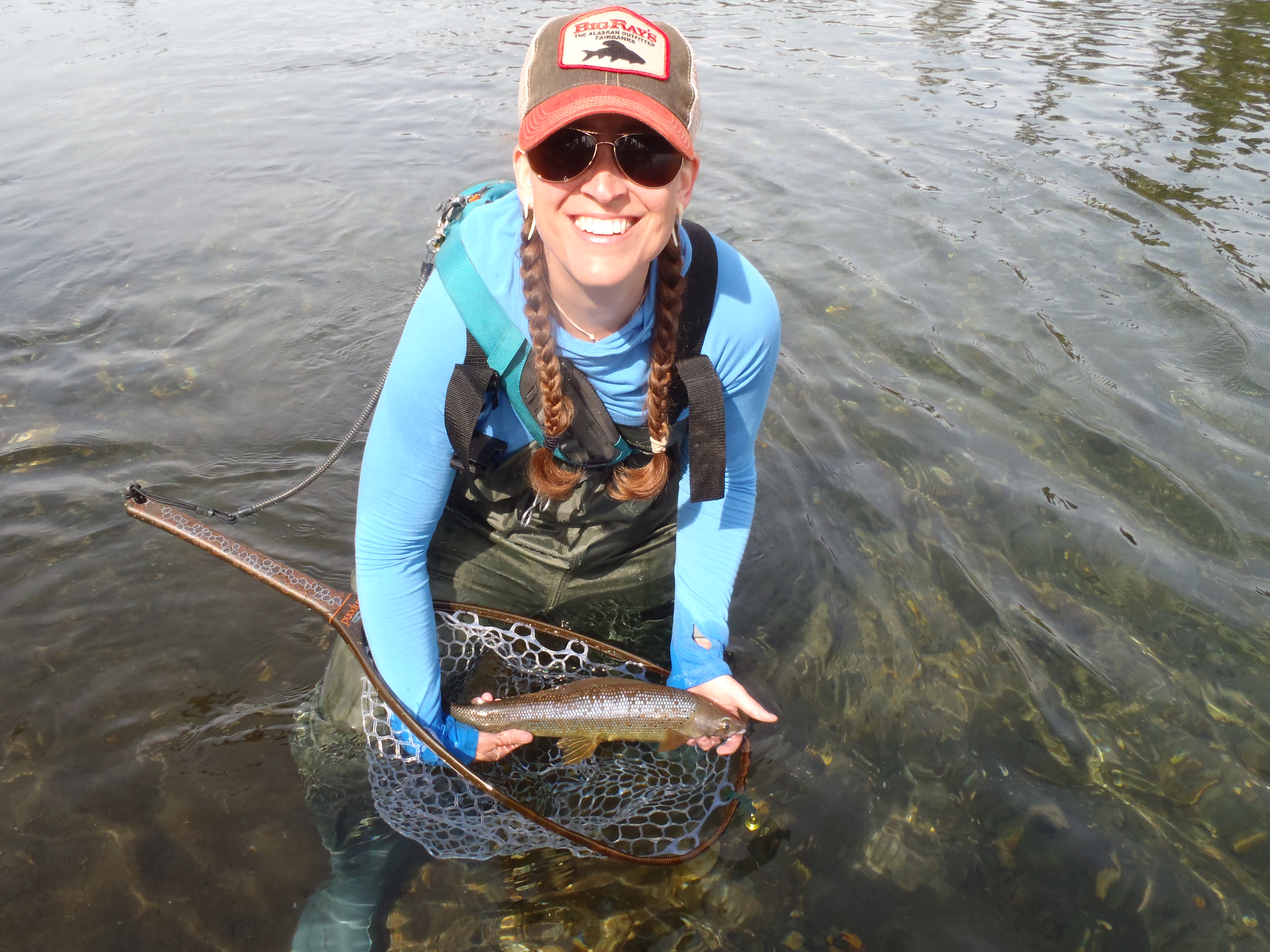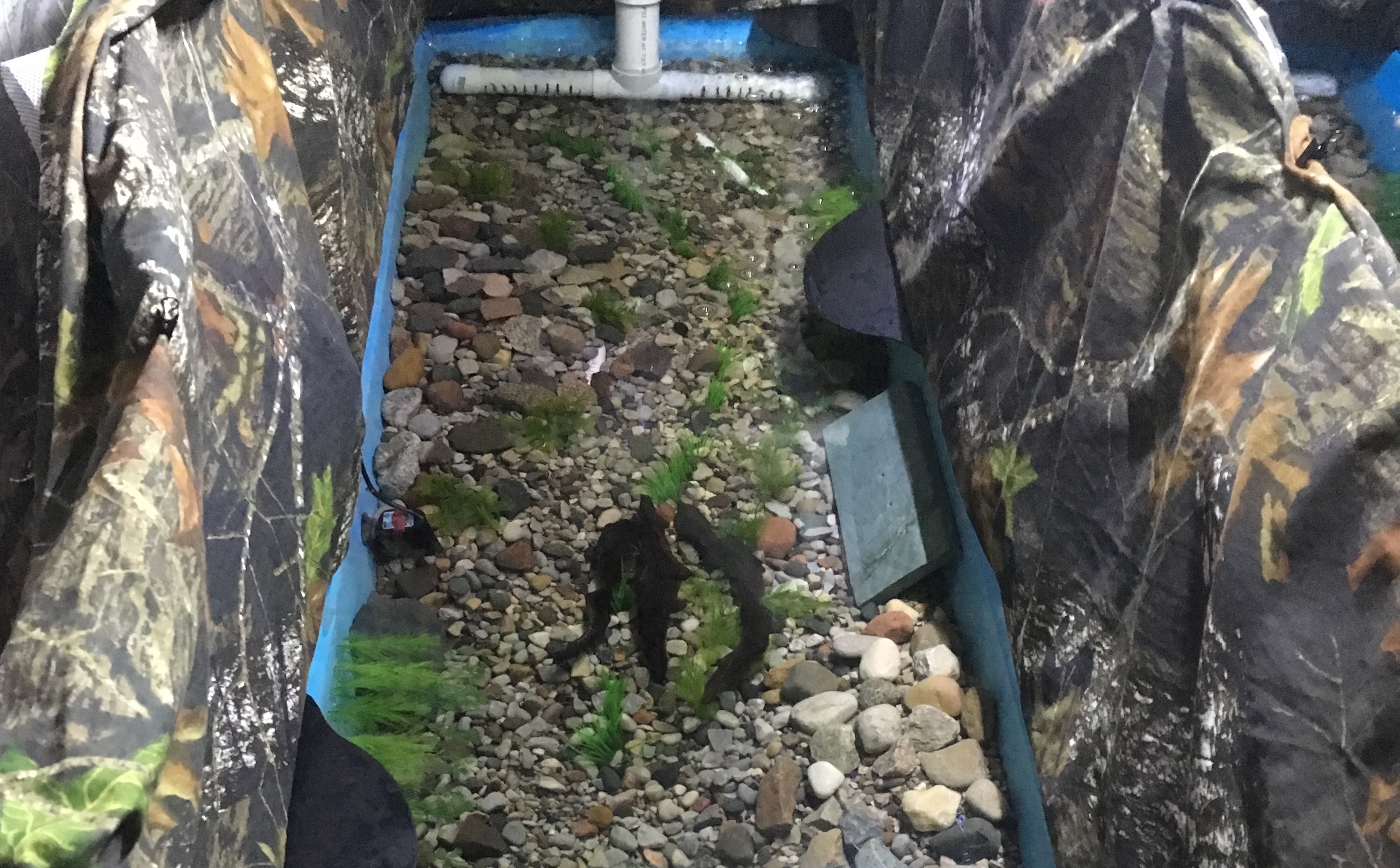MSU researchers part of team attempting to reintroduce Arctic grayling to Michigan streams
Through the Michigan Arctic Grayling Initiative, MSU researchers are teaming with nearly 50 partners to bring back the treasured fish species.

Researchers in Michigan State University’s Department of Fisheries and Wildlife are working with nearly 50 partners to bring an iconic fish species — the Arctic grayling — back to the Great Lakes State.
Equipped with its distinct, large dorsal fin and iridescent appearance, the Arctic grayling is an unmistakable fish. The largest of these streamlined cold-water dwellers grow to a length of 30 inches and weigh up to 8 pounds.
In the areas they currently thrive — Alaska, Canada, Siberia and a rehabilitated population in Montana — they are a popular game fish because of their speed and aggressive feeding style.
Prior to the 20th century, Arctic grayling were abundant in numerous streams in Michigan’s northern Lower Peninsula and in one stream in the Upper Peninsula. A town in the state’s northern Lower Peninsula bears the name Grayling and sits at the heart of the fish’s native range.
Unregulated fishing, habitat destruction and competition from non-native fish species led to the Arctic grayling’s demise in the state.
Multiple reintroductions over the past century have failed, but groups involved in a collaboration created in 2016 believe fishery managers have learned from previous attempts. The Michigan Arctic Grayling Initiative unites the Michigan Department of Natural Resources (MDNR), Native American tribal communities, nonprofits, management agencies, universities and anglers.
“It took a large effort to get this off the ground, and the partners jumped at the opportunity,” said Todd Grischke, assistant chief of the fisheries division for the MDNR. “We needed to identify a more appropriate strategy than previous efforts, one that considers today’s most suitable habitats for reintroduction, reduces as many risks as possible and increases our chance of success.”
Daniel Hayes, a professor in the MSU Department of Fisheries and Wildlife, and Nicole Watson, a doctoral student in Hayes’ laboratory, lead MSU’s portion of the project. They are interested in the ability of Arctic grayling to adapt to the new environments of select Michigan streams, and how those fish fare with respect to predation and competition with other fish species.
“This is a really important fish species for Michigan historically, and it’s great to be a part of a team trying to bring it back,” said Watson, whose work is supported by the Henry E. and Consuelo S. Wenger Foundation. “The Michigan Arctic Grayling Initiative members have been really thoughtful about what has gone wrong in past reintroductions. The number of collaborators this time is inspiring, and we’re constantly learning new things.”
Before any Arctic grayling are released into Michigan streams, project partners are taking a methodical approach to each step of the process. Watson was part of a team of scientists that traveled to the Tanana watershed near Fairbanks, Alaska, procuring fertilized Arctic grayling eggs to bring to Michigan for the establishment of a breeding population known as a broodstock. This is one of three trips that take place over three years, aimed at helping to ensure genetic diversity of the population.

Watson said that 10,000 Arctic grayling have been reared so far, 4,000 of which were transferred to the MDNR’s Oden State Fish Hatchery. The hatchery has a new ultraviolet water disinfection system that gets rid of potential diseases in eggs brought to Michigan from Alaska.
“We obviously want to avoid introducing any diseases inadvertently, particularly diseases that may not be in Michigan already,” Hayes said. “This is a crucial step in building a broodstock, but it’s also important to be good stewards of our water resources. We want to do this reintroduction in a sustainable, practical way.”
These broodstock fish will produce the first eggs that will be released into Michigan waters in roughly two to three years, Watson said. But the eggs aren’t haphazardly dropped into streams. Researchers say that losing track of released fish is one reason previous efforts have not succeeded.
In the new method, eggs are brought from the hatchery and placed in remote site incubators, which are used to contain the eggs while they adapt to their new environment in a process called imprinting. The remote site incubators are simple devices: a bucket that allows water to flow through without washing out the eggs or letting in predators. Hayes said that the rehabilitation projects in Montana have successfully used this technique.
Imprinting may occur as early as the eyed-egg stage, in which the developing fish begins to take in smells and other stimuli of the surrounding water. Fishery managers are banking on imprinting influencing the Arctic graylings’ breeding habits, promoting the likelihood of a return to the location to spawn.
Once the fish are ready to leave the remote site incubator, they will encounter other fish species for the first time, particularly trout. To prepare for this stage of the project, Watson is performing a variety of studies.
In the lab, Watson has fashioned three long aquaria to resemble stream environments. For the predation study, a single 1-year-old brown or brook trout is placed with 20 to 40 Arctic grayling fry (2 weeks to 2 months old) for one to 24 hours. Light and dark scenarios are tested. Watson is recording predation rates and attempts, as well as Arctic grayling reactions to predation.
In the two-month competition trials, each artificial stream holds 20 fish that are roughly 3 months old. The first contains all Arctic grayling, while the second is a mix of 10 Arctic grayling and 10 brook trout, and the third is a mix of 10 Arctic grayling and 10 brown trout. Watson is examining changes in growth, interactions and habitat use.
Watson has found that Arctic grayling are living harmoniously together and with brook trout. While no significant predation is occurring, brown trout are outcompeting Arctic grayling for food and habitat. Watson indicated that these results match closely with those from similar studies in Montana.
Scientists believe this could be because Arctic grayling and brook trout are both native to Michigan, while brown trout are not.

“I’m focusing on these young, wild-caught brown and brook trout since that is what the young Arctic grayling will likely encounter in nursery-type streams,” Watson said. “Knowing streams with brown trout may be associated with a higher degree of competition gives us insight as we look at possible reintroduction locations.”
Watson wrapped up the second year of trials in late 2019 and is currently reviewing data. Both Watson and Hayes are optimistic that the initial findings indicate a much more informed reintroduction this time. Watson has presented her work at professional conferences and to interested parties such as angling organizations, and the feedback has been positive.
“These results are very relevant to management agencies,” Hayes said. “Our advice is that if the water has brown trout, it may not be the most conducive situation to building a healthy Arctic grayling population. Our advice often sounds simplistic, but there is a lot of work that goes into the recommendation.”
For more information on the Michigan Arctic Grayling Initiative, visit migrayling.org.



 Print
Print Email
Email




